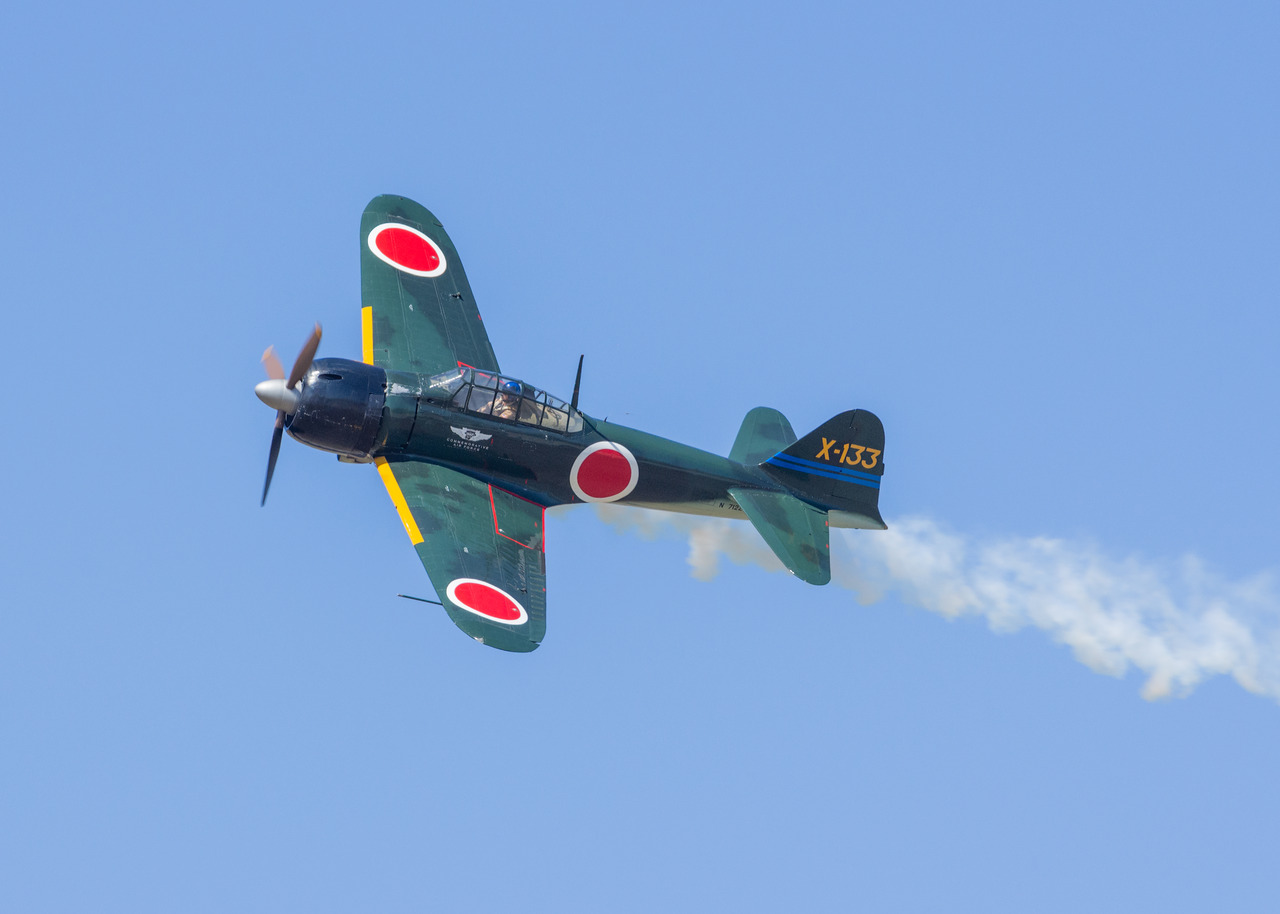
Imperial Japan’s Mitsubishi A6M Zero Deserved Its Fearsome Reputation
The Zero endures as a symbol of Imperial Japan’s efficiency and menace.
Imperial Japan’s most iconic piece of military hardware may well be the Mitsubishi A6M2 Zero, which at the time of its debut was likely the most capable carrier-based fighter in the world. Earning a fearsome reputation, the Zero performed superlatively (with a 12:1 kill ratio) against inferior early-war American aircraft. Eventually, American industry caught up, and later-war American aircraft equaled and surpassed the Zero. But the Zero endures as a symbol of Imperial Japan’s efficiency and menace.
Highly maneuverable
One reason the Zero was so successful in dogfights was its phenomenal maneuverability. The Zero was a lightweight, low-wing monoplane that generated high lift at low speeds with low-wing loading. The result was a fighter with a super low stall speed (below 60 knots) and the ability to outturn American fighters. The Zero also had exceptional range—making the aircraft an option for long-range, carrier-based missions.
The Americans were forced to develop tactics to avoid engaging the Zeros in tight-turning dogfights, as doing so, in something like a wider-turning F4F Wildcat, was typically fatal. Namely, American pilots adopted the habit of descending downward upon Zeros, in a high-speed run, during which the American pilot would fire a quick machine gun burst before returning to the altitude from which the descent had begun. The tactic, which came to be known as “boom and zoom,” proved effective; despite the Zero’s maneuverability and range, the aircraft was quite fragile, and a quick machine gun burst was often sufficient to down a Zero. The Japanese designers made sacrifices to get the aircraft’s weight so low; notably, the Zero did not offer much protection for the pilot and was prone to fires and explosions.
Intelligence coup
The Americans were fortunate to recover an intact A6M2 Zero, which crash-landed, fully intact, on Akutan Island in the Aleutians. The Japanese lost the Zero in June 1942. The pilot died from a broken neck when the Zero flipped on impact. But otherwise, the aircraft remained intact and functional, providing the Americans with a unique opportunity to study the enemy’s primary fighter.
The captured Zero was found to weigh just 5,200 pounds when fully loaded—which was about half the weight of the F4F Wildcat, and which helped to explain the Zero’s superior climb and maneuverability.
The Americans were impressed with the quality of the Zero’s construction, which included flush rivets and guns that were built flush with the wings. The interior was impressive, too, with an efficiently constructed cockpit that offered pilots an intuitive layout. The Zero’s fuselage and wings were also found to have been built in one piece, whereas American aircraft were constructed with the wings and fuselage separate, and then joined later. The one-piece construction offered a sturdier build and better in-flight maneuverability.
But the Americans also discovered the Zero’s weaknesses. The Japanese fighter had a low Vne, or never exceeded a speed of 216 mph. The low Vne was designated to protect against structural failures, which were possible at lower speeds because of the Zero’s fragile design. Translation: the Americans could exploit the Zero in a dive.
The Americans, of course, solved the A6M2 Zero—and Imperial Japan. The mid-war debut of the F6F Hellcat, which was understood to be superior to the Zero, helped turn the tide of the war in the skies and at sea. Also, the depletion of, and inability to readily replenish, Japan’s skilled pilots, meant the Zero became gradually less effective (as novice pilots increasingly manned the controls) later in the war.
About the Author: Harrison Kass
Harrison Kass is a senior defense and national security writer with over 1,000 total pieces on issues involving global affairs. An attorney, pilot, guitarist, and minor pro hockey player, Harrison joined the US Air Force as a Pilot Trainee but was medically discharged. Harrison holds a BA from Lake Forest College, a JD from the University of Oregon, and an MA from New York University. Harrison listens to Dokken.
Image: Angel DiBilio / Shutterstock.com